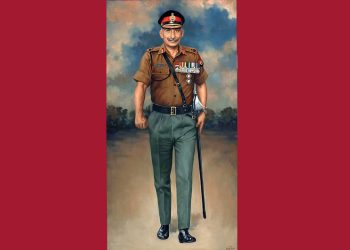It is an ‘act of war’ proclaimed the US Secretary of State – without declaration of war. 14 September 2019, a major Saudi Arabian oil processing plant called Abqaiq, was rocked by a series of explosions along with another oil field. The attack had global ramifications, with steep rise in oil prices. The non-state actor, Houthis claimed it later as a drone attack, a questionable claim due to varied sound reasons. Despite credible surveillance system, even after three weeks the enemy or the aggressor and the typology of weapon system used – drones or missiles, can only be conjectured. The British oil tanker vessel Stena Impero passing through international waters in the Strait of Hormuz was detained by Iran’s Islamic Revolution Guard Corps after an Iranian tanker was held off Gibraltar with the help of the UK Royal Marines – which in fact implies declaration of war – but was not construed as such. And then there are news of weapons and ammunition between dropped by drones in Punjab, India, flown from Pakistan, with obvious inimical, warlike, designs. These are manifestations of 21st Century Warfare.
British General Rupert Smith in his treatise The Utility of Force had stated that in future non-linear character of modern war there will be no secluded battlefields upon which armies will engage in isolation of civilians, but that civilians will be targets and objectives to be won, as much as an opposing force. That draws parallel for our Western borders, where too, largely, the civilian population is so dense (and well to do) that in any victory or success, effect on civilian population and civilian property will remain material!
What then is future of warfare? Clausewitzian philosophy has retained over two centuries that the enduring nature of war is a clash of wills between two of more groups of politically motivated human beings. The ever-shifting character of war reflected on the changing tools and techniques employed on the battlefield to achieve success in the clash of wills. Warfare had always borne a stamp of violence, of physical destruction and territorial acquisition, till the currency of power became reflected by nuclear weapons, and deterrence overtook war-winning strategies. However, in the current post-industrial, information age, it has been argued that weaponised information and cyber technologies would define the next war, prosecuted with precision weaponry. Indeed information can be weaponised, as is evident with fake news.
What then is the operating environment for Indian Army, and predict what it would look like in future? This is imperative as the doctrines, concepts and application of technologies for military operations require deep thought, development, experimentation and then training for employment, in an era of dwindling defence budgets in real terms. The warfare forever has been evolutionary though currently at least in India; it is evolving compartmentalized in conventional and unconventional. Of late, it is being basketed into hybrid warfare. For a long time the army has been operating in environment combating non-state actors. At the outset, the Army (and armed forces) must foretell the utility and utilisation of military force and the methodology of its employment, in the light of threats and challenges envisaged. With the sprint in military technologies – mindful of those on evident on the horizon, and those under creation, the armed forces need to plan acquisition prudently, in mid and long term. Comparative warfighting concepts of the known adversaries need be wargamed in a futuristic operating environment including the technological intake.
The fact of the matter is that despite incessantly employed in combating insurgencies – which comes largely in the ambit of unconventional warfare – the foundation that the Army rests upon is conventional war strategy. This conventional war strategy relies upon credible decimation of adversaries’ war-fighting potential, and capture of maximum territory, especially in the context of our western adversary. This is considered as victory, though it is contingent on many factors, including that the enemy will fight similar kind of conventional war. However the 21st century warfare has moved on, with the Chinese three Warfares strategy, Informationalised Warfare and now Intelligised Warfare. The latter has blurred the lines between peace and war. Pakistan on the other hand, with military-technological support from China, credible conventional forces, is also a master of proxy war of sponsoring terror, will amalgamate both in a conflict.
In this argument of conventional and unconventional warfare, it is necessary to consider kinetic versus non kinetic realm. Kinetic warfare relates to physical force levels and warfighting wherewithal like precision projectiles, drones bombs, bullets, rockets, and other munitions. On the other hand non-kinetic warfare is gaining ground with electromagnetic and cybernetics such as computer network attacks and even psychological operations. The effect of non-kinetic operations will have functional, psychological, or behavioral aspects, with far reaching ramifications, especially on the national psyche and national resolve. Will non–kinetic operations by themselves be sufficient to achieve political aims of war, is a moot question for only future to answer. Its growing salience and the likely effects cannot be denied. The attack on Iranian Natanz nuclear enrichment facility by Stuxnet virus, may not have be earth-shaking, yet it was the most credible use of warfare. Similarly effect is of the above mentioned attack in Saudi Arabia oil fields. These tools of smart power are bound to have significant application in future warfare.
The battlespace hence stands utterly cluttered, with methodology of utilisation of force, and its typologies varying from physical forces to terror to non-kinetics – applied aggregated or disaggregated, in peace or in war, with or without declaration of war, and even with plausible deniability. Contextually hence, we must not become prisoners of thinking which indicates that conventional wars paradigm will be the ultimate in resolving intransigent issues with adversaries. The conventional or traditional means of waging wars, that Indian army specialises in doctrinally, in wherewithal and in training, is like an open book. Alternatives in warfare have an uncontrolled ambit and scope. The capabilities necessary to absorb and respond to these alternative forms of warfare require a totally different toolkit. Unconventional warfare, as it is said today, is without a clear definition, and is by far more challenging, as also it will be more difficult to describe on cessation of war, as victory or success.
For policymakers enunciating national security strategies, there must be for elasticity in defining threat and challenges. In the Armed Forces, it is necessary to jettison the strait jacket of eulogising conventional war. In peace and in war, compartmentalising into conventional and unconventional will be negative in imagination– with excessive reliance on conventional forces. It is too constraining, and does no justice to the breadth of future warfare. There is but one typology of wars that India may have to prosecute in the future which encompasses, amalgamates and subsumes current day conventional and unconventional, kinetic and non-kinetic. The toolkit essential has much, much enlarged in scope and in must be defined as a whole. Need is to force critical thinking that will warrant segregation of force to specialisations for warfare in its entire ambit.
For, in all warfare henceforth, the populace of India, will be intricately involved and may be on the receiving end – from fake news to cyber warfare to precision projectiles.














